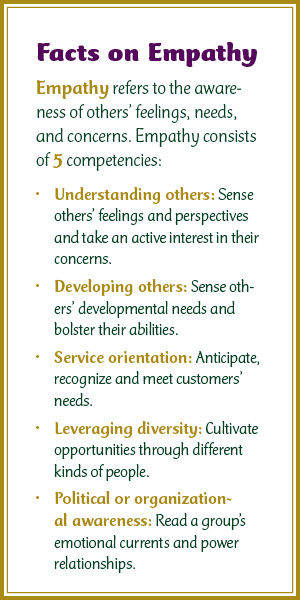
You know those days when everything seems to go wrong? When you tell yourself you are not going to trip on that extension cord, you are not going to mention that painful topic to your friend, you are not going to burn your hand on that pan you just pulled out of the oven—and then you do all three simultaneously?
There’s a scientific explanation for this phenomenon. Harvard Professor of Psychology Daniel Wegner calls it ironic process theory, and it has to do with the backfire effect of thought suppression. Ironically, trying to quash a specific behavior or thought tends to trigger that very action or thought.
The preposterous blunders that riddle the plots of sitcoms and screwball comedies may have a basis in reality, after all.
The White Bear Challenge
“Try to pose for yourself this task: not to think of a polar bear, and you will see that the cursed thing will come to mind every minute,” Fyodor Dostoyevsky wrote in Winter Notes on Summer Impressions over a century and a half ago. Wegner confirmed this hypothesis in white bear challenges conducted at Harvard’s Mental Control Laboratory.
Wegner uses the term “the precisely counterintuitive error” to describe the experience of being irresistibly drawn to the result we’re seeking to avert.
Edgar Allen Poe calls it the “imp of the perverse,” and it also accounts for those strange, self-destructive impulses we experience when in proximity of danger, such as being tempted to leap off a cliff or unlatch the car door while hurtling down the freeway.
Metacognition Malfunction
Wegner traces the cause of this phenomenon to a malfunction in our metacognition process. Thinking about thinking is a handy talent, but it can short-circuit when we apply it to thought suppression.
Like a self-reflexive programming script that gets stuck in an infinite loop, the self-monitoring process dominates our consciousness. This means we constantly think about the thought we are trying not to think about as our brain reminds us not to think about it.
The Power of Suppression
Practicers of reverse psychology, advertisers and romance novelists all understand the power of suppression. Tell someone not to do something, and they’ll be tempted to do it—even if the thought never occurred to them before.
Experiments reveal that grieving individuals who try to suppress their grief take longer to recover from loss. Subjects told to repress sexual thoughts show higher levels of arousal than those told not to suppress such thoughts. The hearts of anxiety disorder patients beat faster when they are listening to a relaxation tape. When two groups of people are told about the same unhappy event, the group told not to feel sad ends up feeling worse.
The Antidote
What does ironic process theory have to do with happiness? Journalist Oliver Burkeman argues that it could hold the key to a counterintuitive approach to happiness. Drawing on several millennia’s worth of philosophy, religion and science as well as his own international adventures, Burkeman explores this theory in The Antidote: Happiness for People Who Can’t Stand Positive Thinking.
Quoting John Stuart Mill (“Ask yourself whether you’re happy, and you cease to be so”), Burkeman suggests we can only glimpse happiness in our peripheral vision—never directly. Just as looking at the sun can blind the viewer, seeking happiness through get-happy-quick schemes not only fails to produce it but may even result in greater misery.
Where Positive Thinking Goes Wrong
The cult of positive thinking (different from the scientifically based positive psychology movement) that has dominated the self-help shelves for decades may be causing more harm than good.
Research shows that daily affirmations can escalate self-critical thoughts among those with low self-esteem. This is because we tend to reject messages that contradict our sense of self, according to self-comparison theory.
In The Optimism Bias: A Tour of the Irrationally Positive Brain, neuroscientisit Tali Sharot writes that optimists—while healthier and happier—may not be as grounded in reality as pessimists, overestimating the degree of their control over circumstances.
Barbara Ehrenreich even goes so far as to suggest that the corporate pressure to be yaysayers instead of naysayers helped trigger the recent Global Financial Crisis in her book Bright-Sided: How the Relentless Promotion of Positive Thinking Has Undermined America.
The Benefits of Negative Thinking
Burkeman posits that continual attempts to suppress negative feelings such as insecurity, fear of death, uncertainty, failure and sadness may be a primary cause of unhappiness.
Surprisingly, the path to happiness may lie in not only acknowledging but actively embracing these negative feelings, thus sapping them of their destructive power.
In our next post, we will explore actions you can take to practice the negative approach to happiness.








 If you are game to play along, here’s your assignment: choose a person and situation, and then experience what it is like to fully understand that person’s feelings, needs and how they are responding or reacting to a situation. Observe and sincerely attempt to understand their perspectives without judgment. This will require being present to the person, reflecting and practicing active and empathetic listening. Inquire how they are feeling and see how close you are to understanding what they are experiencing during the situation. Notice how this makes you feel and how the person responds to you.
If you are game to play along, here’s your assignment: choose a person and situation, and then experience what it is like to fully understand that person’s feelings, needs and how they are responding or reacting to a situation. Observe and sincerely attempt to understand their perspectives without judgment. This will require being present to the person, reflecting and practicing active and empathetic listening. Inquire how they are feeling and see how close you are to understanding what they are experiencing during the situation. Notice how this makes you feel and how the person responds to you.




